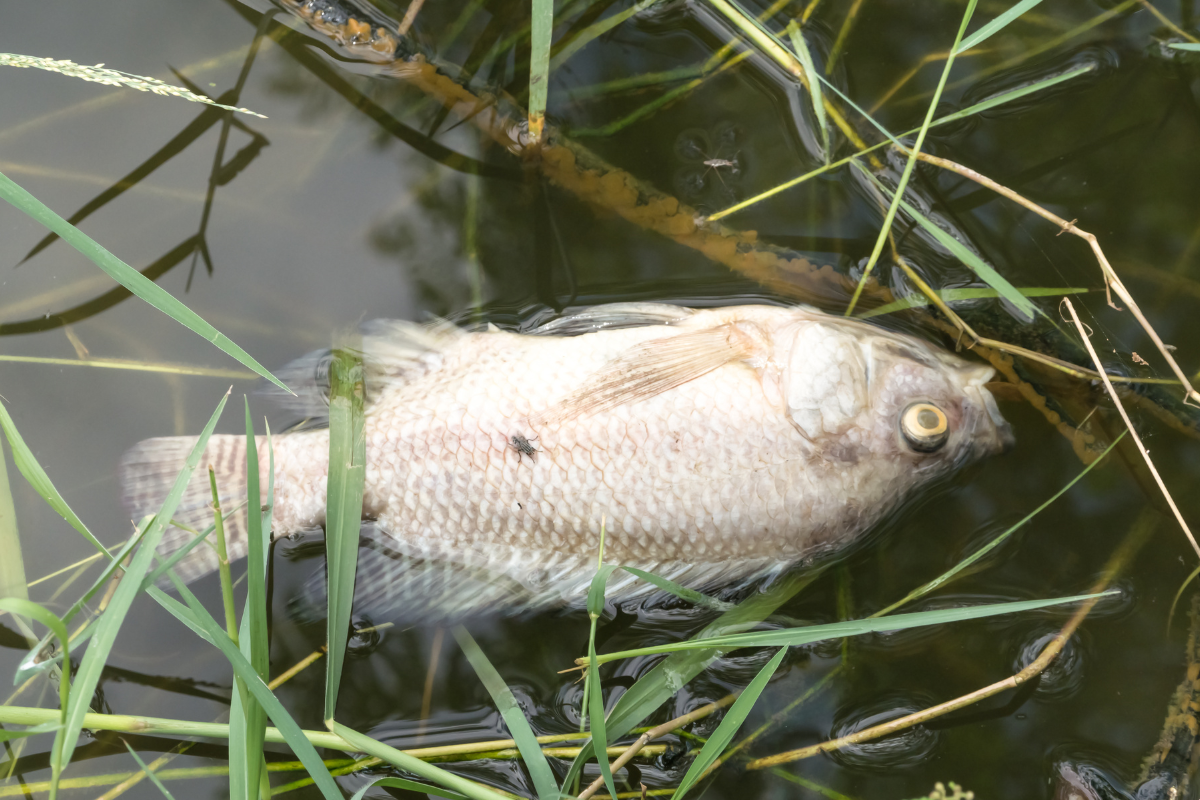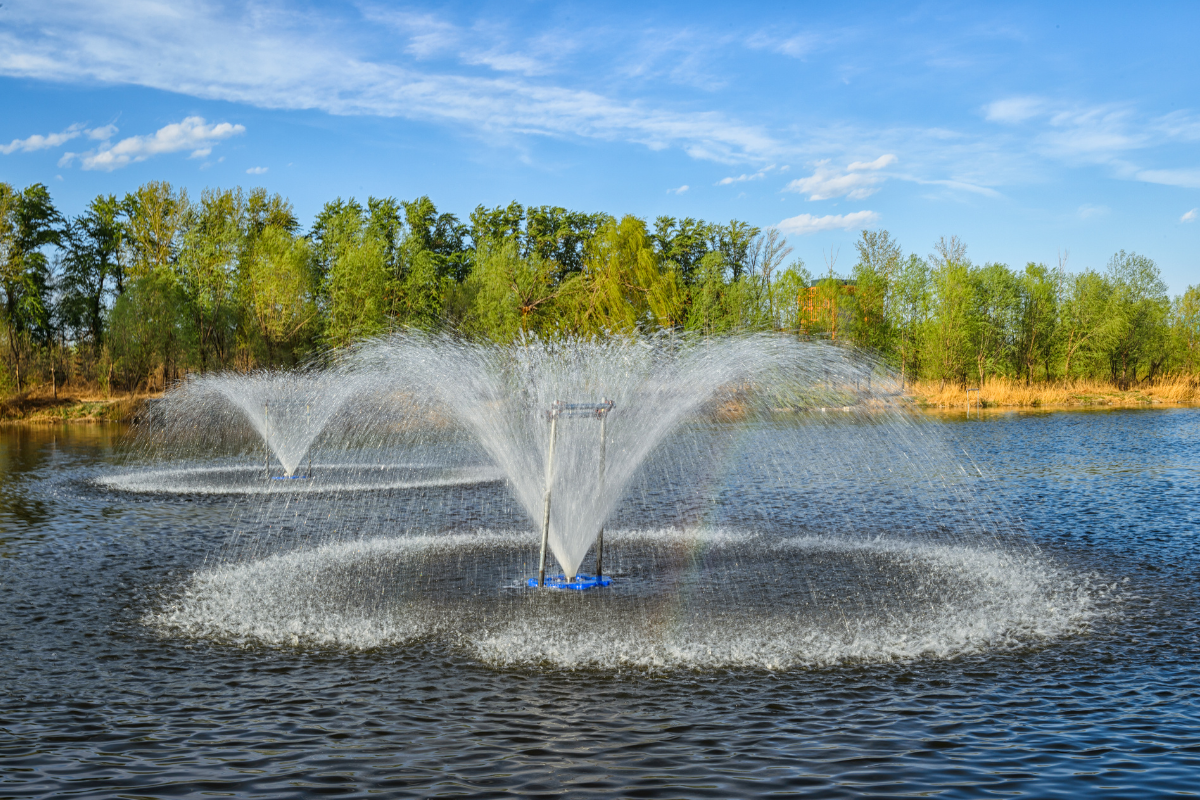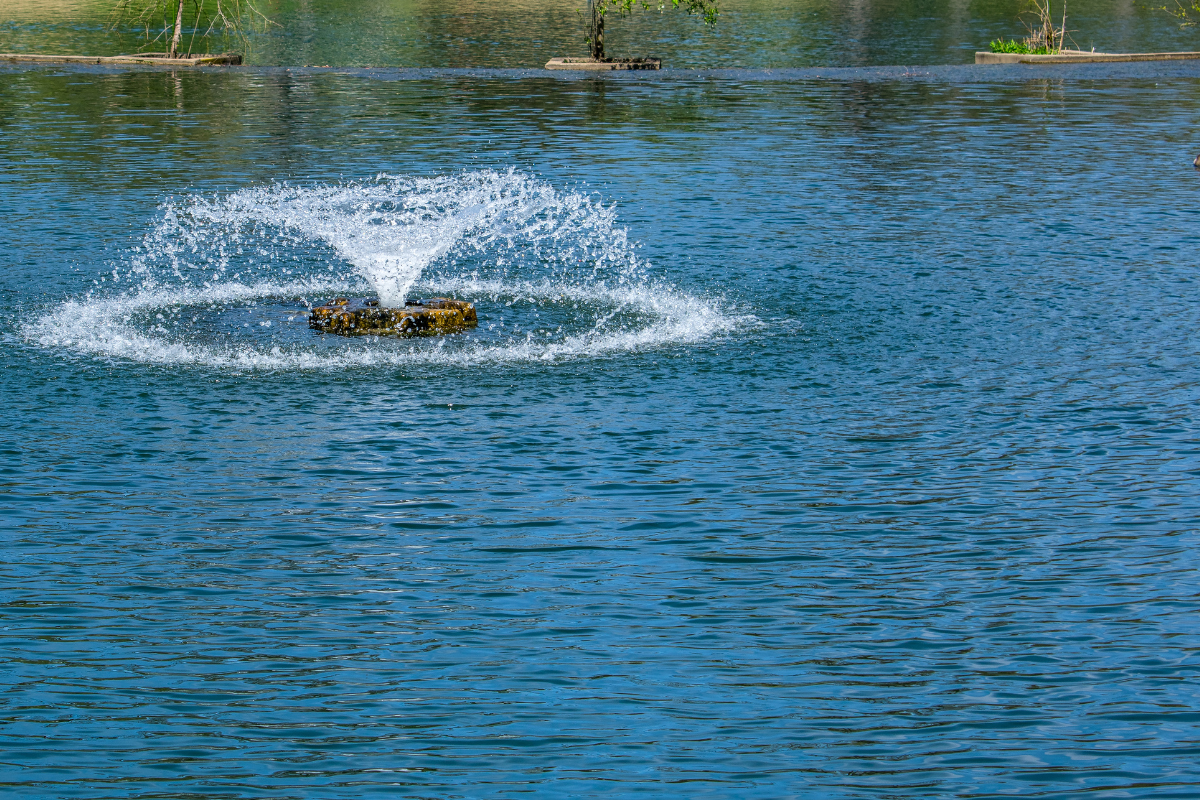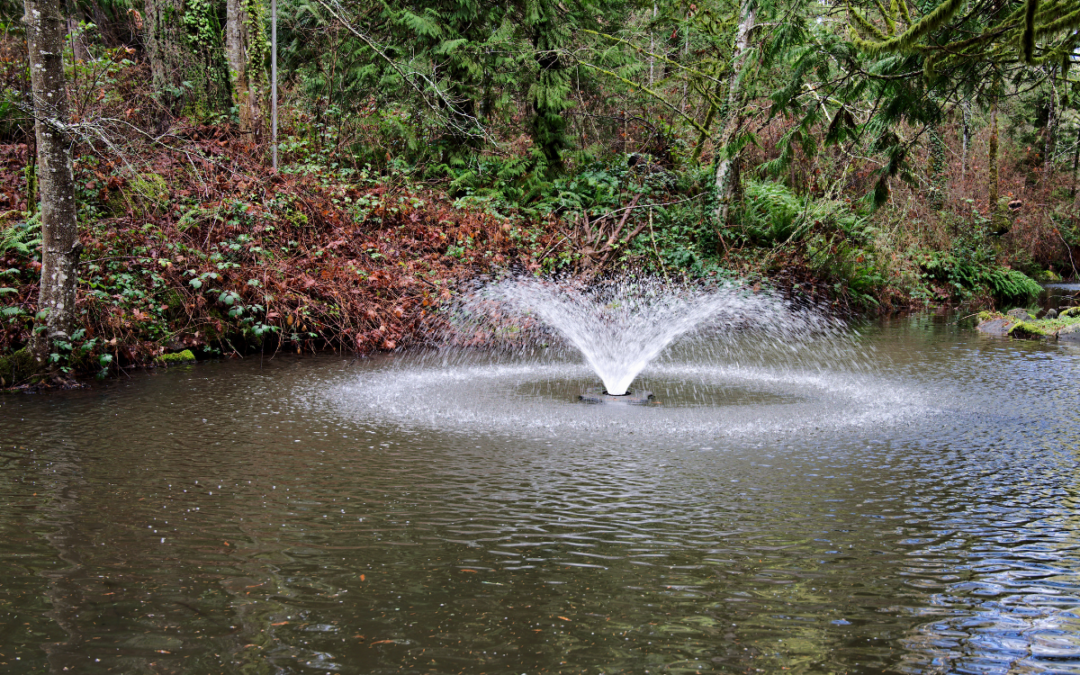Pond turnover, a natural phenomenon that can negatively impact the health of aquatic ecosystems, is often a major concern for pond owners. It occurs when layers of water in a pond or lake mix due to temperature changes, and it can lead to fish kills, foul odors, and overall poor water quality. Fortunately, aerators and fountains can play a crucial role in preventing pond turnover by maintaining proper oxygen levels and promoting continuous water circulation. This article will explore what causes pond turnover, how it affects water quality, and how aerators and fountains can help reduce its likelihood.
What Causes Pond Turnover?
Pond turnover occurs when the stratified layers of water in a pond or lake mix due to temperature shifts. In many ponds, especially those located in temperate climates, the water naturally separates into distinct layers during the warmer months. These layers are based on temperature and density:
- Epilimnion: The upper layer of the pond, which is warmed by the sun. This layer is typically well-oxygenated due to contact with the atmosphere.
- Thermocline: A middle layer where the temperature drops rapidly with depth. This layer acts as a barrier between the warm, oxygen-rich surface water and the cooler, oxygen-depleted bottom water.
- Hypolimnion: The deepest layer of the pond, where water is cooler and often low in oxygen. Organic matter that sinks to the bottom decays in this layer, consuming oxygen in the process.
During the summer, these layers remain relatively stable because the warm surface water is less dense than the cooler bottom water. However, as temperatures begin to drop in the fall or during sudden cold spells, the surface water cools and becomes denser, sinking to the bottom and forcing the bottom layer of oxygen-depleted water to the surface. This process is called pond turnover, and it can have several detrimental effects on pond health.

The Consequences of Pond Turnover
When pond turnover occurs, the mixing of the oxygen-poor water from the bottom with the oxygen-rich water from the surface can lead to a sudden drop in dissolved oxygen levels throughout the pond. Fish and other aquatic life that rely on oxygen to survive can be severely affected, often leading to fish kills.
In addition to oxygen depletion, pond turnover can also cause:
- Nutrient release: Organic matter that has settled at the bottom of the pond can be stirred up during turnover, releasing nutrients like phosphorus and nitrogen into the water column. These excess nutrients can fuel algal blooms, which further deplete oxygen levels as they decay.
- Foul odors: The release of gases such as hydrogen sulfide from decaying organic matter can result in unpleasant odors emanating from the pond.
- Turbid water: Sediment and debris from the bottom of the pond are mixed into the water, making it cloudy and unattractive.
These combined effects can severely compromise water quality and the overall health of the pond’s ecosystem. Preventing turnover is essential for maintaining a balanced and healthy pond environment, and this is where aerators and fountains come into play.

How Aerators and Fountains Can Help Prevent Pond Turnover
Aerators and fountains work by circulating water and promoting oxygen exchange between the water and the atmosphere. This continuous movement helps to disrupt the stratification process, preventing the formation of distinct temperature layers that lead to turnover. Here’s how aerators and fountains benefit pond health:
1. Aerators: Promoting Oxygen Circulation
Aerators are mechanical devices that increase the amount of dissolved oxygen in the water by continuously circulating it. There are two main types of aerators:
-
Surface Aerators: These systems float on the surface of the pond and churn the water, creating ripples that increase surface contact with the air. This exchange allows oxygen to dissolve into the water more easily. Surface aerators are particularly effective for shallow ponds, where they can circulate a significant portion of the water column.
-
Bottom Diffusers: These aerators work by releasing tiny bubbles of air from the bottom of the pond. As the bubbles rise to the surface, they push cooler, oxygen-poor water upwards, encouraging mixing and oxygenation throughout the entire pond. Bottom diffusers are particularly effective in deeper ponds, as they can help oxygenate water in the hypolimnion, where oxygen levels are typically low.
By keeping the water moving and well-oxygenated, aerators help prevent the formation of a thermocline and reduce the risk of pond turnover. The consistent circulation prevents the buildup of oxygen-poor water in the bottom layer, ensuring a more stable and balanced pond environment.
2. Fountains: Aesthetic and Functional
Fountains not only add a beautiful visual element to a pond but also play an important role in water circulation and oxygenation. When water is sprayed into the air by a fountain, it breaks the surface tension and allows more oxygen to dissolve into the pond. Additionally, the movement of water created by the fountain helps to disrupt stratification and improve overall circulation.
Fountains are especially useful in smaller, shallower ponds, where they can effectively promote aeration and prevent stagnation. While they may not be as efficient at mixing deep water as bottom diffusers, they still offer significant benefits by preventing the surface water from becoming too warm and oxygen-depleted.
Additional Benefits of Aerators and Fountains
Beyond preventing pond turnover, aerators and fountains offer several other advantages for pond health and aesthetics:
-
Algae Control: By promoting oxygenation and circulation, aerators and fountains can help reduce the likelihood of algal blooms. Algae thrive in stagnant, nutrient-rich water, but the continuous movement created by these devices disrupts their growth and distribution.
-
Improved Fish Health: Oxygenated water is essential for fish and other aquatic life. By ensuring that oxygen levels remain stable throughout the pond, aerators and fountains create a healthier environment for fish to thrive. Fish are less likely to experience stress or die-offs when oxygen levels are kept consistent.
-
Clearer Water: Circulating water helps to reduce the buildup of organic matter and debris on the bottom of the pond, keeping the water clearer and more visually appealing. Sediment that might otherwise accumulate and contribute to poor water quality is more evenly distributed and can be more easily managed.

Let Us Help with Your Pond!
Pond turnover can be a significant threat to the health and stability of a pond, but the use of aerators and fountains can greatly reduce the likelihood of this event occurring. By promoting water circulation, oxygenation, and preventing stratification, these devices help to maintain a balanced aquatic ecosystem. In addition to protecting fish and improving water quality, aerators and fountains offer aesthetic benefits that can enhance the overall beauty of a pond.
For pond owners looking to safeguard their ponds from turnover and maintain long-term water quality, investing in an aerator or fountain is a practical and effective solution. If you’re in the south GA or north FL region and need an aerator or fountain installed in your pond, complete this form and we’ll contact you to schedule a time to meet.

